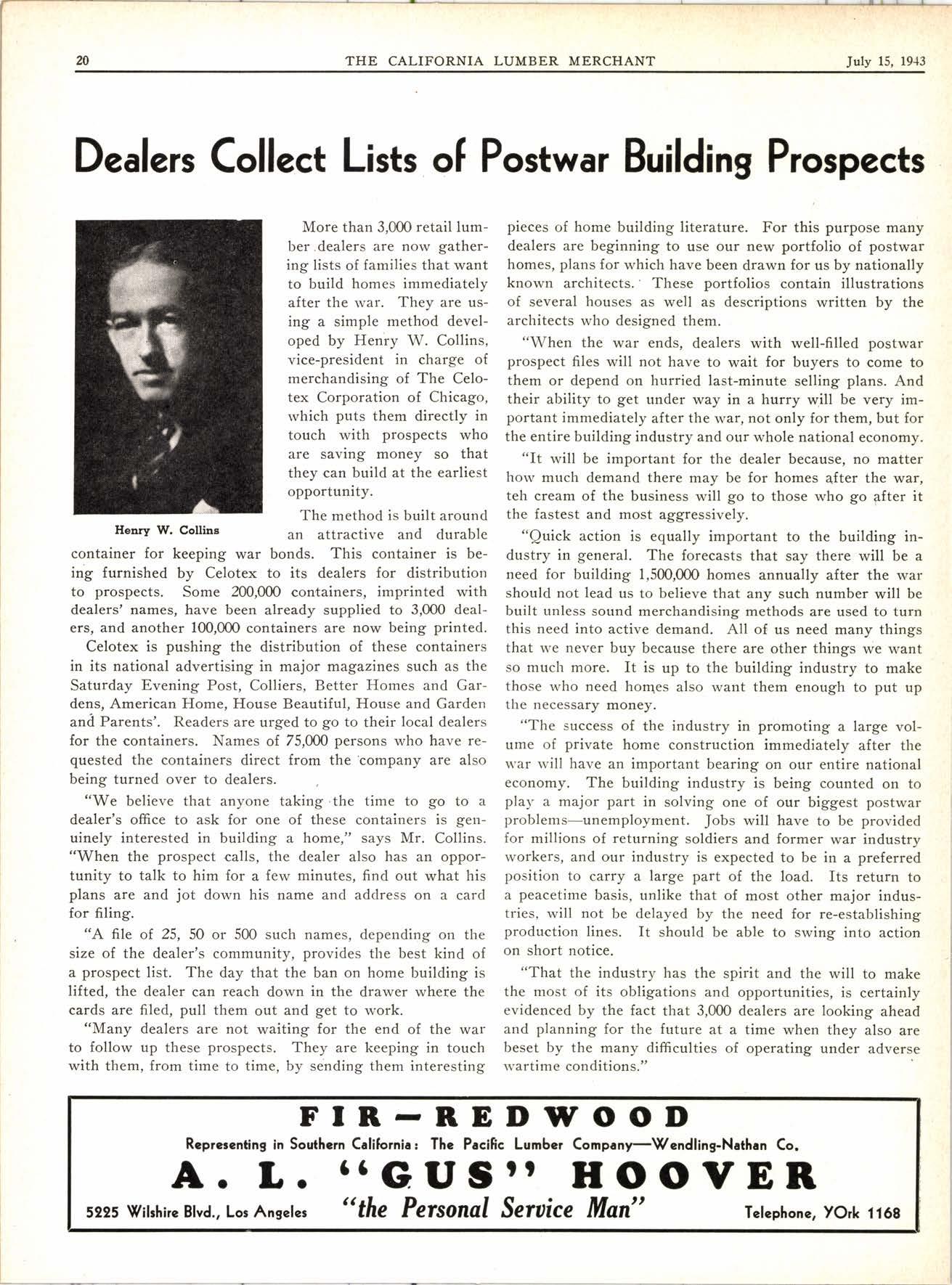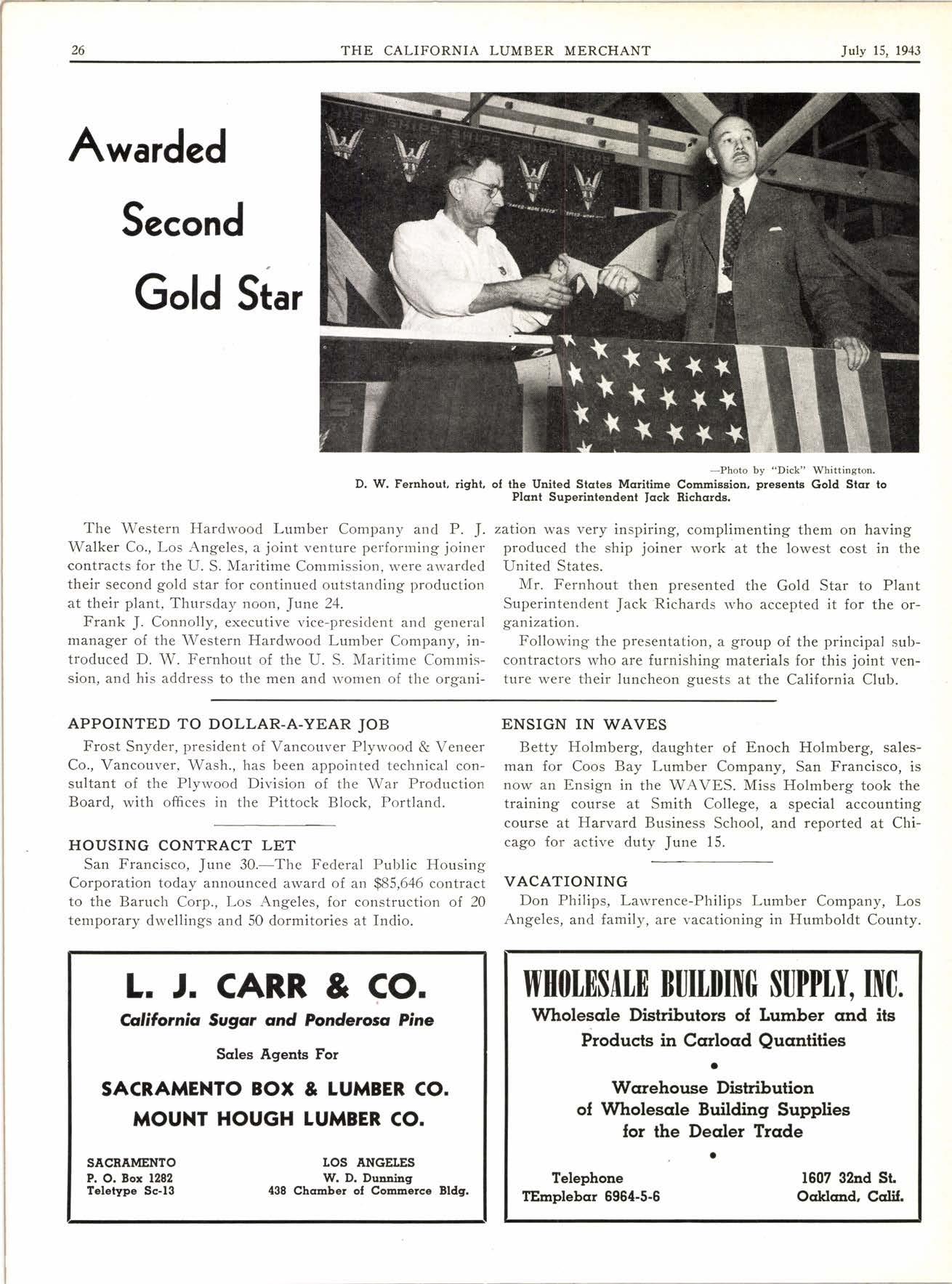
2 minute read
MPR No. 94 Amended---Western Pine Lumber
Buyers of premium priced Western Pine lurnber rvho were heretofore required to certify that they would absorlr the increased mill price today were relieved of that obligation by the Office of Price Administration.
Prior to today's action, a $3.00 "premium" over the regulation ceiling prices was provided for producers in five Western states, to apply on twelve specified grades and sizes of Western Pine lumber which by order of the War Production Board were to be channeled almost exclusively to government agencies, contractors and sub-contractors and manufacturers of Western wooden agricultural containers. Purchasers not within the classes named under this prior provision were permitted to buy such grades and sizes under special WPB release, and at the "premium" price, provided they certified that the increased price would be absorbed by them and not passed along.
Recently WPR has released ihcreasing quantities of this lumber to "non-government" buyers. Production is at a level to permit such releases, which are said by WPB to be necessary to maintain the wartime civilian economy. Lumber channeled into these uses will be available principally for farmers, manufacturers of essential millwork, and through retail yards to small domestic consumers.
The former requirement that non-government purchasers absorb the permium effectively bars this channeling of lumber earmarked for essential civilian use. Therefore, OPA said, the requirement is removed in order that the lumber may reach sdch users, and in such amounts, as WPB may determine. This step is necessary to "aid in the effective prosecution of the war" OPA said, adding that it "will not increase the cost of living."
The new authorization for other buyers to pay the premium price is contained in Amendment 4 to Maximum Price Regulation 94 (Western Pine and Associated Species of Lumber) and becomes effective June 24, 1943.
The actual increase in cost to the average individual farmer will be only $1.50 per year according to OPA's study. Against this slight increase the farmer would be faced with a lack of lumber for such items as hog pens, brooder houses and farm construction, resulting in very serious losses in crops and live stock.
Similarly, the increased cost of fitting oud a house with storm windows and storm doors might be two or three dollars; but the failure to get the storm windows and doors would cost more than that in fuel for a single month, OPA pointed out.
It will now be possible for yards to pass on the $3 addition as such sales as are governed by Regulation 215, (Distribution Yard Sales of Softwood Lumber). Moreover, appropriate price adjustments in stock millwork (MPR 293) and Stock Screen Goods (MPR 381) will be made, officials said.
The $3 increase originally was granted for producers May 31 of this year to compensate them for increased costs resulting from the wage increases for logging workers granted in April with the approval of the War Labor Board.
The $3 increase is applicable to maximum prices , f. o. b. mill, in all sales of the following six listed species in twelve named grades and sizes of'Western pine produced by mills under Order L-290:
Ponderosa pine, Idaho white pine, sugar pine, or lodgepole pine lumber produced in California, Idaho, Montana, Oregon or Washington, and white fir,'Western white spruce or Engelmann spruce lumber produced in California, fdaho, Montana, and in parts of Oregon and Washington East of the crest of the Cascade Mountains.
The twelve specific grades are: No. 1, No.2, No.3, No. 4, and No. 5 common; all grades of inch shop, grades of No. 2 and, No. 3 shop 5/4 inch and thicker; No. 1 and No. 2 box, No. 1 and No. 2 dimension.
For small mills not producing lumber under Order L-29O, maximum prices f. o. b, mill, may be increased $3 on all Western Pine lumber produced, regardless of species, grade or size.
Amendment 4 to Maximum Price Regulation 94, E.ffective June 24,1943.









